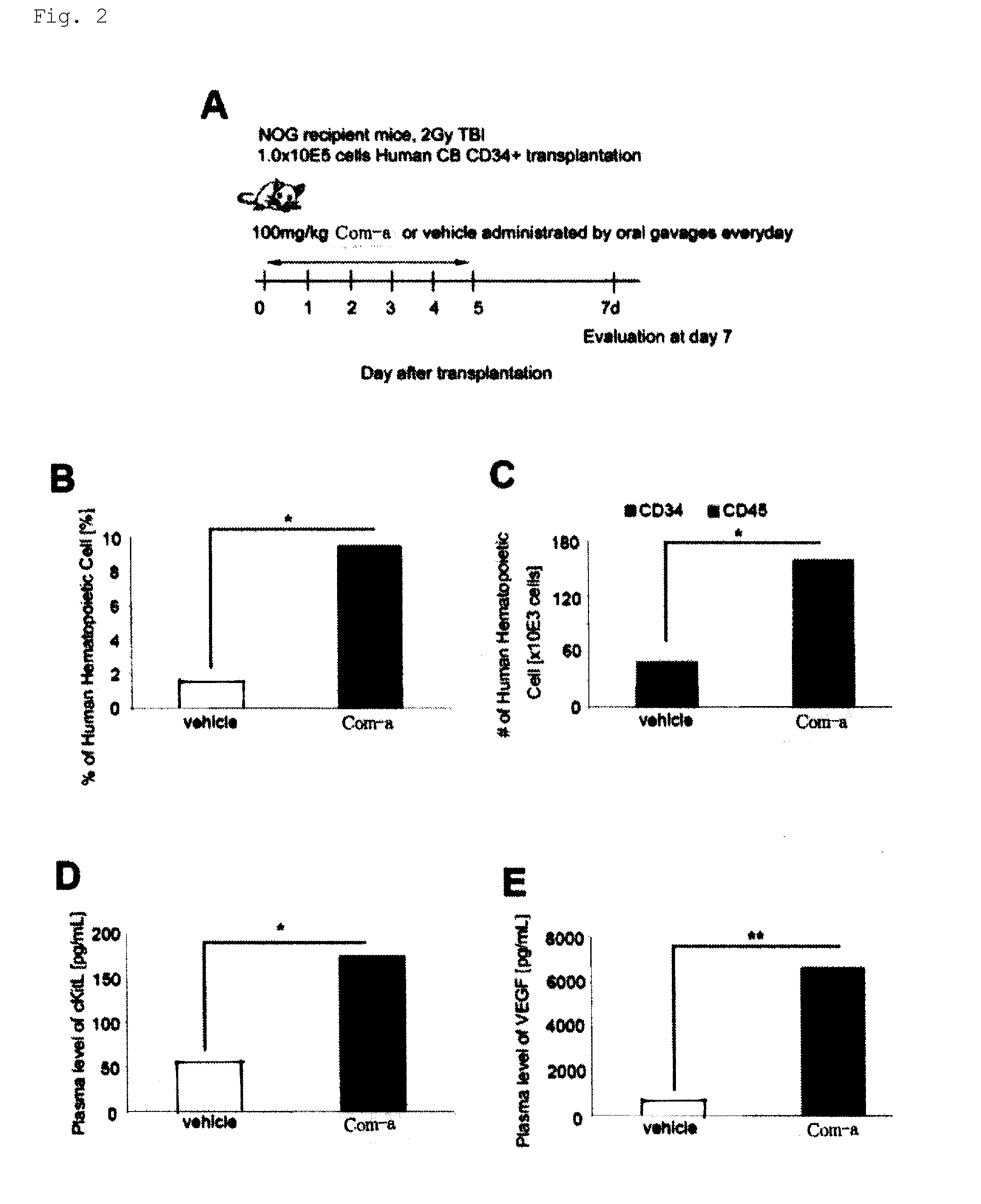Novel use for pai-1 inhibitor
a plasminogen activator and inhibitor technology, applied in the field of new plasminogen activator inhibitors, can solve the problems of destroying hematopoietic progenitor cells, reducing tumor prognosis, and reducing tumor prognosis, so as to achieve effective killing and improve tumor prognosis.
- Summary
- Abstract
- Description
- Claims
- Application Information
AI Technical Summary
Benefits of technology
Problems solved by technology
Method used
Image
Examples
examples
[1032]Below, the present invention is described in more detail with reference to Examples and Reference Experimental Examples. However, the present invention is not limited to these examples.
reference experimental examples
Reference Experimental Example 1
Measurement of PAI-1 Inhibitory Activity of Compound Group 1
[1033]The compounds (compound examples 1 to 7 and 9 to 14) shown in Table 1 that fall within the scope of compound group 1 represented by Formula (I) and existing compounds (1) and (2) known as a PAI-inhibitor (see Table 1) were measured and evaluated for inhibitory activity against human PAI-1 (manufactured by Molecular Innovations, Inc. (USA); the same applies hereinafter).
[1034]Specifically, human-derived PAI-1 was added to a 0.1% Tween 80-containing 100 mM Tris-HCl (pH 8) solution containing each of the above compounds in a given concentration (0.29 mM or 0.12 mM), and the mixture was incubated at 37° C. for 15 minutes. Subsequently, human-derived tissue plasminogen activator (t-PA) (manufactured by American Diagnostica, Inc. (USA); the same applies hereinafter) adjusted to 0.35 pmol / μL was added thereto, and the mixture was further incubated at 37° C. for 15 minutes. Then, 1.25 mM of S-2...
reference experimental example 2
Measurement of PAI-1 Inhibitory Activity of Compound Group 1
[1036]The compounds (compound examples 2, 4, 5, 7, 8, and 13 to 107) shown in Table 2 that fall within the scope of compound group 1 represented by Formula (I), the existing compounds (1) to (6) known as a PAI-1 inhibitor, and hydrochloride salt of the known compound (7) (see Table 2) were used as a test compound and evaluated for inhibitory activity against human PAI-1 (manufactured by Molecular Innovations, Inc. (USA); the same applies hereinafter).
[1037]Specifically, human PAI-1 was added to a 0.1% PEG-6000- and 0.2 mM CHAPS-containing 50 mM tris-HCL (pH 8) solution containing each of the above compounds in a given concentration (62.5 μM or 15.6 μM), and the mixture was incubated at 37° C. for 15 minutes. Subsequently, human-derived tissue plasminogen activator (t-PA) (manufactured by American Diagnostica, Inc. (USA); the same applies hereinafter) adjusted to 0.05 pmol / μL was added thereto, and the mixture was further in...
PUM
| Property | Measurement | Unit |
|---|---|---|
| concentration | aaaaa | aaaaa |
| weight | aaaaa | aaaaa |
| weight | aaaaa | aaaaa |
Abstract
Description
Claims
Application Information
 Login to View More
Login to View More - R&D
- Intellectual Property
- Life Sciences
- Materials
- Tech Scout
- Unparalleled Data Quality
- Higher Quality Content
- 60% Fewer Hallucinations
Browse by: Latest US Patents, China's latest patents, Technical Efficacy Thesaurus, Application Domain, Technology Topic, Popular Technical Reports.
© 2025 PatSnap. All rights reserved.Legal|Privacy policy|Modern Slavery Act Transparency Statement|Sitemap|About US| Contact US: help@patsnap.com



